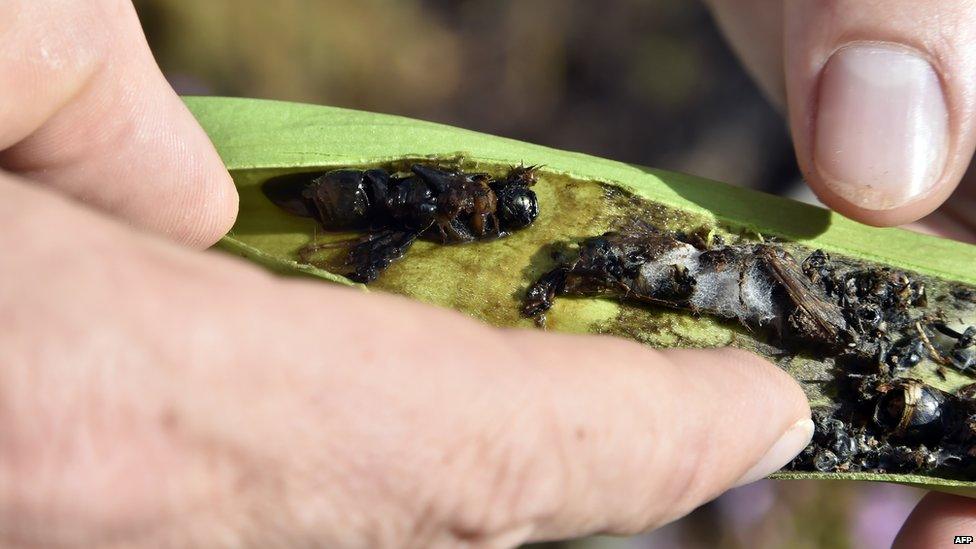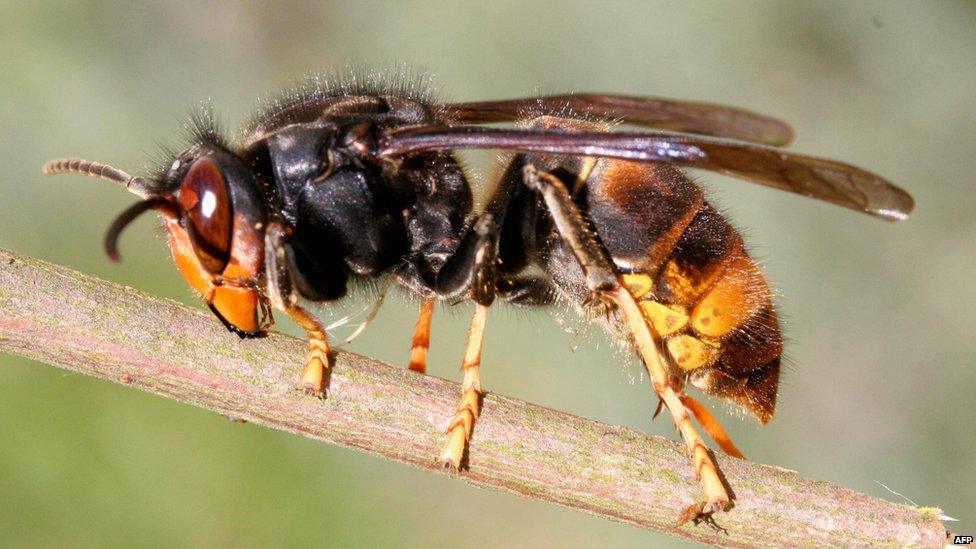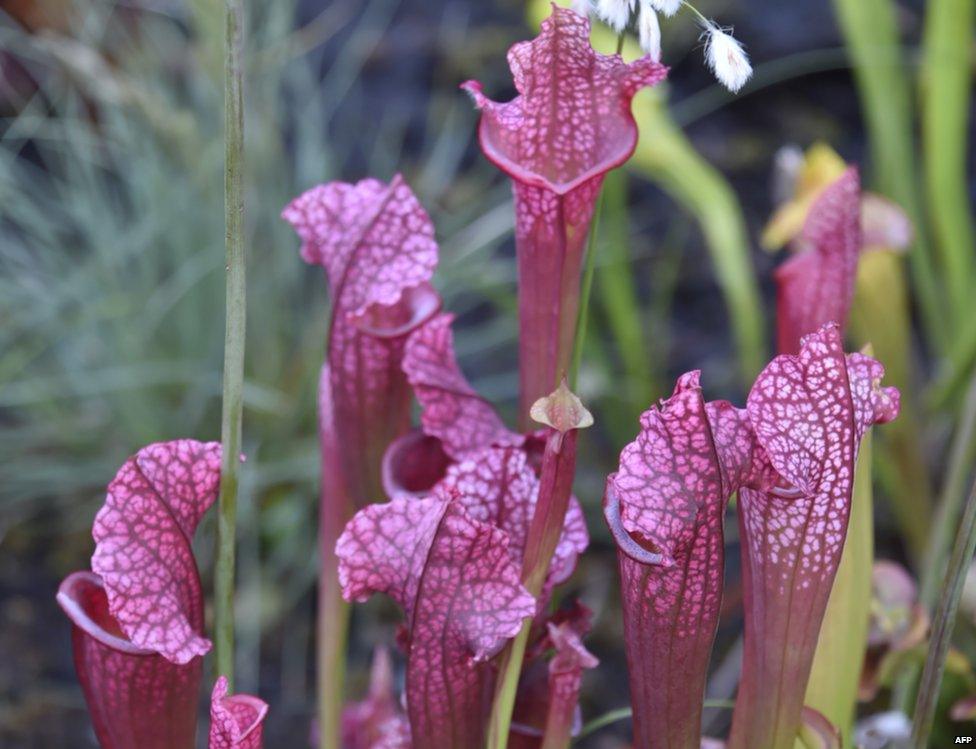Pitcher plant in France eats bee-killing Asian hornets
- Published

Nantes botanical garden found dead Asian hornets in a Sarracenia stem
Bee-killing Asian hornets spreading across Europe now face a natural enemy that lures them to destruction - a carnivorous North American plant, French experts say.
The head of a botanical garden in Nantes, western France, says the pitcher plant Sarracenia devours Asian hornets - but not European hornets. Nor does it eat bees or wasps.
Romaric Perrocheau recently found a Sarracenia stem full of dead hornets.
Asian hornets are a menace to beehives.
Mr Perrocheau, quoted by AFP news agency, said Sarracenia had "invented a very selective trap" for the aggressive Asian hornets.
The hornets are apparently attracted by Sarracenia's nectar and pheromones on the plant's tubular leaves. Once the hornet crawls inside the rim at the top it easily slips and plunges into the pitcher, to be digested by the plant's juices.
The trap appears to be a European adaptation, as Asian hornets do not exist in Sarracenia's native Massachusetts, in the eastern US. The plant can be grown easily in Europe and is not considered a threat to native flora.
Mr Perrocheau and an entomologist aim to study the contents of 200 pitchers, hoping to identify the chemical secret of their attraction for Asian hornets.

Swarming Asian hornets can quickly wipe out bee colonies

The long tubes of Sarracenia give hornets no escape once trapped
Concealed nests
The insects - catalogued as Vespa velutina nigrithorax - are a threat to honeybees in France, Portugal, Spain, Italy, Germany and Belgium.
They were first spotted in France in 2004, but their native habitat is the Shanghai region of China. Hornet stings have proven fatal to humans in some cases because of allergic reactions.
Each Sarracenia plant has up to 15 pitchers, and can attract as many as 50 hornets. But a typical hornet's nest houses 4,000 insects - so the plants by themselves cannot deal with the problem.
In April The Independent , externaldaily reported that the Asian hornets had not yet been sighted in the UK, but that plans were in place to destroy their nests if they crossed the English Channel.
The nests are notoriously difficult to find and destroy, however - often hidden high up in trees or in underground hollows.
European hornets do not pose such a threat to bees.
- Published10 October 2014
